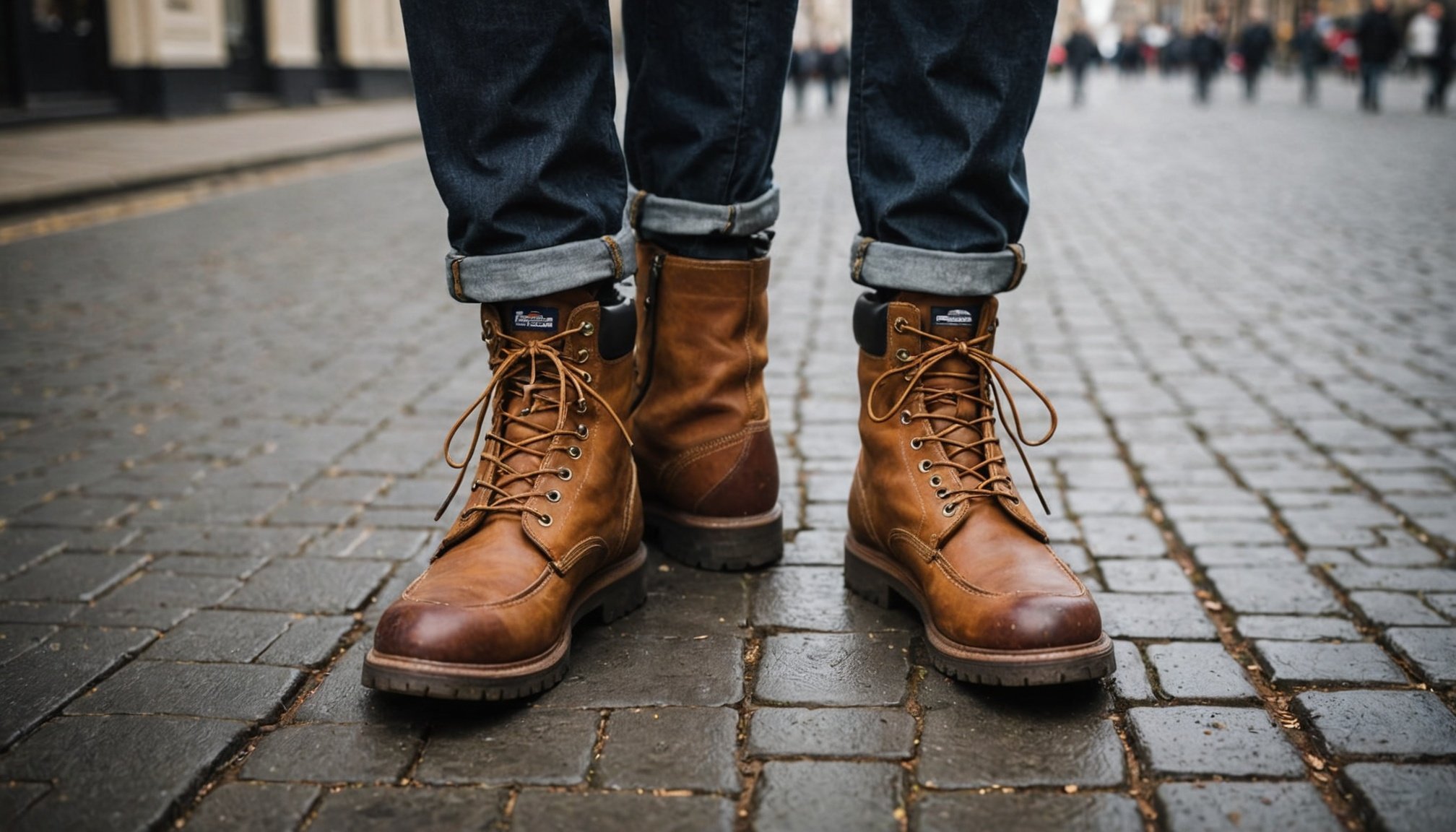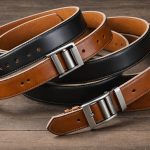Overview of Essential Elements in Winter Boots
When it comes to navigating the unique challenges of British weather, selecting the right winter boots is imperative. The British climate often presents a mixture of rain, snow, and cold temperatures, which demands a careful consideration of the boots’ features. Winter boots must offer a balance of warmth, waterproofing, and traction to keep feet comfortable and safe.
First and foremost, focus on the essential features. These include reliable insulation to ensure warmth, typically achieved through materials like Thinsulate or wool, which vary in effectiveness and suitability. A thick sole with suitable traction patterns is crucial for slip resistance on both icy sidewalks and muddy trails. Additionally, the waterproofing technology of boots ensures dryness in wet conditions, but breathability shouldn’t be compromised, as it helps in moisture management and comfort.
Also to read : The Ultimate Guide to Seamlessly Transitioning Your Bag from Day to Night: Expert Purse Selection Tips in the UK
Understanding the construction and advanced technology used in winter boots can significantly aid in making informed decisions. This knowledge not only helps in choosing boots that suit personal needs but also extends their longevity. By considering these essential features, you’ll be better prepared to face the unpredictability of British winters.
Insulation Details
Selecting the right insulation types for winter boots is crucial to ensure adequate warmth in cold conditions. Different thermal properties are achieved depending on the materials used.
In the same genre : Discover UK’s Boldest Color Pairings This Season to Elevate Your Fashion Game!
Synthetic insulation, like Thinsulate, effectively traps heat and maintains a lightweight feel, an ideal choice for wet environments as it dries quickly. On the other hand, natural insulation such as wool provides excellent warmth even when wet and is highly breathable, making it suitable for varying temperatures.
It’s essential to consider both the thickness and coverage of insulation in winter boots. More substantial insulation offers increased warmth, but be mindful of how this affects boot weight and flexibility. Coverage should be comprehensive, particularly around the toes and ankles, to ensure consistent warmth across the foot.
A balance between warmth and breathability is critical, as excess heat retention may lead to discomfort if moisture cannot escape. Understanding these insulation characteristics allows for informed decisions, ensuring your winter boots are equipped to handle the demands of the British climate while keeping your feet comfortably warm.
Waterproofing Features
When selecting waterproof boots, understanding the intricate technologies can enhance your decision-making. Key innovations like Gore-Tex and other waterproof membranes are pivotal in ensuring water resistance. These technologies are designed to prevent water ingress while maintaining breathability, thus allowing perspiration to escape.
Evaluating the effectiveness of waterproof materials involves checking the construction for seamless integration, ensuring there are no potential weak points for leaks. Materials such as full-grain leather and rubber offer natural water resistance, with treatments available to enhance this further.
Breathability is crucial for comfort, especially in damp conditions typical of British weather. Without this feature, moisture buildup within the boot can lead to discomfort and a decrease in warmth efficiency. It’s essential to balance waterproofing with breathability for optimal foot climate control.
Key Considerations:
- Invest in boots with a reputable waterproof membrane.
- Check for fully sealed seams to prevent leaks.
- Ensure breathability is maintained to avoid dampness inside the boots.
By focusing on these features, you can maintain comfort and dryness, navigating wet British terrain effectively.
Traction and Grip Evaluation
Evaluating the traction patterns of winter boots is essential for ensuring slip resistance, which is particularly crucial for navigating ice and snow. Boots equipped with deep lugs and multidirectional patterns provide superior grip, reducing the likelihood of falls on slick or uneven surfaces. Materials like Vibram rubber are popular for their durable, anti-slip properties and flexibility in cold conditions.
When it comes to the boot sole, various compounds like polyurethane and EVA offer different benefits. Polyurethane provides a robust sole with excellent abrasion resistance, ideal for rugged terrain, while EVA offers a lightweight alternative, increasing comfort during extended wear. Recognising the demands of both urban and rural settings can aid in selecting the appropriate sole material.
For those traversing icy city sidewalks or muddy countryside paths, boots boasting well-designed grip features are paramount. Recommendations include opting for boots with a strong balance between sturdy patterns and soft rubber compounds, ensuring traction while maintaining flexibility. Understanding these detailed elements ensures a more secure footing across diverse British landscapes.
Style and Fit Considerations
When selecting the ideal winter boots, considering the right boot styles and fit guide is crucial for both functionality and fashion. The British climate demands boots that not only perform well but also align with personal style preferences.
Boots are often available in a variety of styles, each suited for different occasions. From chic ankle boots perfect for a casual outing to sturdy high-tops for more rugged adventures, understanding the functionality of each style is essential. Choosing the correct size and width is vital to ensure comfort and avoid foot fatigue. It’s recommended to measure your feet, considering wearing thicker socks during winter for the best fit.
Fashion trends can influence your choices, showcasing boots that are both stylish and functional. However, balancing aesthetics with practicality in terms of weather resistance can enhance performance without compromising on looks.
In summary:
- Evaluate popular boot styles and their specific uses.
- Measure for accurate size and width, ensuring comfort with winter attire.
- Stay informed about trends that complement functionality.
The right blend of style and fit ensures your boots are both fashionable and suitable for the British weather landscape.
Comfort and Support Features
When selecting winter boots, prioritising comfort is crucial, particularly for extended wear in harsh conditions. Cushioning plays a vital role in shock absorption, reducing the impact on joints during each step. Look for boots with advanced cushioning technologies, such as EVA foam or gel inserts, to enhance comfort levels.
Additionally, arch support is essential for maintaining foot health, especially if you’re walking on uneven terrain. A supportive insole can prevent fatigue and pain by evenly distributing pressure across the foot. Consider boots that offer removable insoles, allowing for custom orthotics if necessary.
- Tips for optimal comfort:
- Choose boots with contoured footbeds that provide natural arch support.
- Look for models that incorporate a broader toe box for ample space.
- Ensure the boots offer adjustable lacing or fastening systems for a tailored fit.
Finally, account for various foot shapes, particularly if you have high arches or flat feet. Selecting boots that cater to your foot type can enhance the overall comfort and support experienced during wear. By focusing on these critical features, you can ensure your winter boots provide the necessary comfort and support in diverse conditions.
Expert Recommendations and Customer Reviews
In the realm of winter boots, both expert opinions and customer insights are invaluable tools in making informed purchasing decisions. Top winter boots on the market are often those that seamlessly combine essential features like insulation and traction with comfort and style. Experts typically highlight boots that excel in these areas, offering tailored recommendations based on the latest technologies in waterproofing and durable soles.
Diving into customer insights, you’ll find feedback on real-world performance. Many customers praise boots with a blend of natural and synthetic insulation for their warmth retention and moisture-wicking capabilities. Moreover, best rated boots frequently receive accolades for their slip-resistant soles, essential for the unpredictable British weather. Customers often stress the importance of trying on boots with winter socks to ensure a pleasing fit, reflecting real-life usage scenarios.
Understanding the authenticity and reliability of these reviews is crucial. Seek platforms that verify purchases to ensure you’re reading genuine experiences. Combining expert and customer input provides a comprehensive view, empowering you to choose boots that not only meet but exceed your expectations.
Maintenance and Longevity Tips
Taking diligent care of your winter boots can significantly extend their longevity, ensuring they remain functional and stylish throughout harsh British winters. Different materials require specific care methods. For instance, leather boots benefit from regular conditioning to maintain their suppleness and water resistance. Applying a quality leather conditioner can prevent cracking and drying.
Suede boots, however, demand a gentler approach. Use a suede brush to remove dirt, and apply a protective spray to fend off moisture without altering the texture. Regardless of material, keeping your boots clean is paramount. After exposure to mud or salt, wipe them down to prevent residues that can weaken the fibers over time.
Avoid these common mistakes: never dry boots with direct heat sources like radiators, which can cause warping or damage. Instead, allow them to dry naturally. A good storage routine is also critical. Use boot trees or stuff them with newspaper to retain their shape when not in use.
By adhering to these boot care tips, you’ll protect your investment, ensuring your footwear withstands the unpredictable British climate with grace and durability.
Buying Guide and Checklist
Embarking on a journey to find the perfect pair of winter boots? Here are some crucial points to streamline your purchasing process. A thorough Buying Guide will highlight essential features such as insulation, waterproofing, and traction—ensuring your boots are apt for British weather. Select boots with both style and functionality to handle rain, snow, and icy conditions.
Begin by crafting a personalized checklist. This should include your specific needs like warmth, slip resistance, and fashion preferences. Understanding these elements can guide your purchase, helping you prioritise features based on usage scenarios.
Explore options both online and in-store. Online shopping provides a vast array of choices and reviews to assist decisions. Yet, nothing compares to physically trying boots at a store for fit and comfort. Verify size guides and adjust for winter socks, ensuring a snug fit. Look for return policies that allow flexibility should adjustments be needed.
In summary, preparing with a robust checklist and an understanding of the features tailored for your needs will enhance your search, ensuring your purchase is both practical and stylish for British winters.
Size Charts and Measuring Guidance
Ensuring a perfect fit is crucial when selecting winter boots, especially considering the varying size guide from brand to brand. To achieve the best fit, accurately measuring your foot is paramount. Here’s how: trace your foot on a piece of paper, measure the longest and widest parts, and use these dimensions to compare against size charts. Keep in mind that wearing winter socks might require a half size up for added comfort.
Understanding brand size variances is essential, as each manufacturer might have slightly different standards. Websites often provide size guides specific to their boots, which can aid in making the right choice. Additionally, reviews from other customers can offer insights into whether certain boots run large or small.
To ensure your boots fit well with winter attire, consider trying them on with the socks you intend to wear in colder conditions. This practice helps prevent ill-fitting footwear that could lead to discomfort or heat loss. Remember, a snug but not tight fit will maintain warmth without restricting circulation, ensuring your feet remain comfortable throughout the chilly months.










